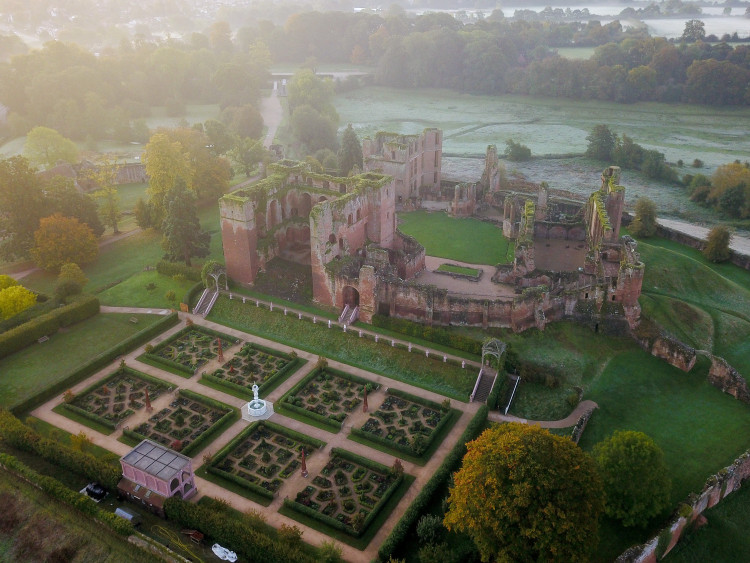REWIND: The 1266 siege of Kenilworth Castle - the longest in English medieval history
By Tim Smith 28th Oct 2023
By Tim Smith 28th Oct 2023

Following the discovery of a historical inaccuracy on a new wayfinding sign in the town, we have republished our feature on the siege of Kenilworth Castle.
Between June and December 1266 Kenilworth Castle was the location of a siege that was to become the longest in English medieval history.
The royal forces under the control of Prince Edward (later Edward I) laid siege to the castle to wrestle it from the control of those rebelling against the English King, Henry III.
Civil war had persisted in England throughout the 1260's after the rebel Simon de Montfort, Earl of Leicester, had raised an army against the king.
Although Simon was killed before the siege of Kenilworth, he was very much at the heart of this episode.
Caught by surprise
Kenilworth played a significant part in the revolts of the 1260's.
On the morning of the 1 August 1265, de Montfort's army, led by his son (also imaginatively called Simon) was taken by surprise at Kenilworth castle.
De Montfort's men had assumed that their enemy, Prince Edward, and his men were at Worcester and so too far away to cause them any trouble.
Their information was incorrect however, and at dawn the Prince's men descended upon those camping outside the castle walls, capturing many of de Montfort's knights and his banners.
The young De Montfort only escaped back to inside the castle by reportedly rowing naked across the lake that served as part of the castle's defences.
Civil War
Brother-in-law to the king, Simon de Montfort (senior) began his revolt against the crown in 1264, endeavouring to pass more of the king's authority and power over to a council of barons.
In February 1264, fighting broke out in the Welsh Marches, the border area between England and Wales.
De Montfort's men, calling for, amongst other things, the cancellation of their debts to Jewish moneylenders, orchestrated a series of attacks against Jewish populations across the country, including London, Worcester and Winchester.
De Montfort's army and the royal forces clashed at the Battle of Lewes, in Sussex, on 14 May. Simon de Montfort emerged victorious having captured not only Henry III, but his son Prince Edward.
This gave de Montfort de facto control of the country, with Henry III merely a figurehead, allowing the former to cancel all debt owed to Jews.

Power restored
Unfortunately for de Montfort, Prince Edward escaped captivity in 1265 and began to raise an army, rallying resistance to the new regime.
Following his surprise attack at Kenilworth in August 1265, Prince Edward trapped de Montfort and his army in a loop of the River Avon near Evesham.
The Battle of Evesham would be de Montfort's last. Trapped and outnumbered he fought to the death, as did several of the nobles still loyal to his cause.
Despite de Montfort's death, Evesham was not the end of the revolt however.
Pockets of resistance to Henry III dotted the country, but hopes of reconciliation were thwarted when Henry, desirous of revenge, passed a statue in September 1265, permanently disinheriting those who had supported de Montfort.
Prince Edward was left with the task of putting down the smaller rebellions that this provoked and by the summer of 1266 the Royalists were secure enough that they could lay siege to Kenilworth Castle.
The longest siege in English history
The siege began in late June, with the castle garrison, numbering over a thousand, well provisioned and determined to repel any attempt to capture the fortress.
The castle itself was well situated and defended. Being almost entirely surrounded by water in the form of a large lake - which had actually been enlarged by Henry III's father King John - the walls were protected from being undermined.
As such, the royal army endeavoured to bring down the walls with siege engines such as trebuchets, but the defenders had stone throwing devises with a greater range that helped to counter this process.
The besiegers even attempted an amphibious assault across the lake, but this too proved unsuccessful.
The only real option that remained was to sit and wait for the defenders to run out of food, a process that could take many months and would require a great logistical effort to maintain the siege.
In an attempt to bring the siege and the wider revolt to a speedier conclusion, the Dictum of Kenilworth was passed and delivered on 31 October 1266.
The Dictum stated, amongst other things, those who had been disinherited the previous year could effectively buy back their land at several times its value, the factor to be determined on how much involvement they had had in the revolt.
The garrison within Kenilworth rejected these terms, refusing to surrender the castle they had fought so hard to defend.
However, their spirit finally broke on 13 December when starvation and disease compelled the defenders to submit to the royal army and the Dictum's terms and they were permitted to leave with their horses and weaponry, for it was the castle itself the besieges desired.
Having at last fallen the castle was then granted to Henry III's son Edmund, Earl of Lancaster, who had led the efforts to capture the place.
In total the siege lasted for 172 days and as such is the longest enterprise of its kind in English medieval history, though in truth it did little to hasten the end of the revolt which came about more through political endeavours following the death of Simon de Montfort and wasn't achieved until a year after the castle fell.
It does though afford the once mighty fortress a well deserved place within medieval history.
CHECK OUT OUR Jobs Section HERE!
kenilworth vacancies updated hourly!
Click here to see more: kenilworth jobs
Share:



























